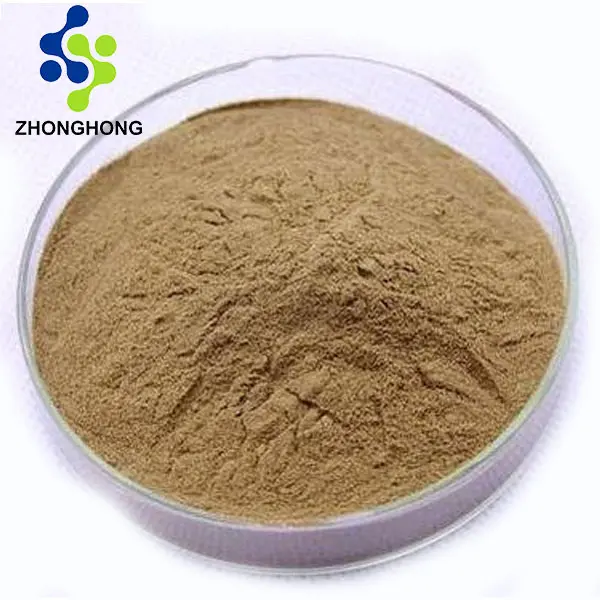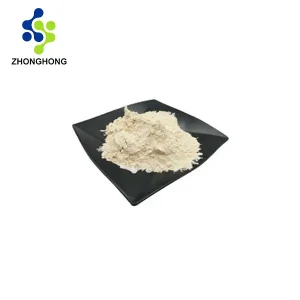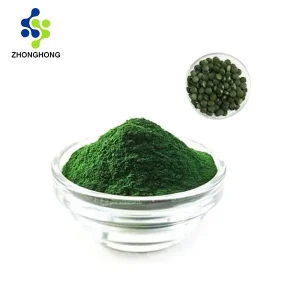Manassantin B: Unveiling the Potent Bioactive Compound with Multifaceted Applications

1. What is Manassantin B?
2. Company Introduction
2.1 A 28-Year Pioneer in Botanical Extraction
2.2 Robust Research and Development
- University Collaborations: Our strategic partnerships with five top-tier universities have led to the development of over 20 patented extraction and purification technologies. These collaborations also grant access to our exclusive global compound library, which houses a vast collection of bioactive molecules, enabling in-depth research into the properties and potential applications of Manassantin B.
- Advanced Facilities: Equipped with cutting-edge instruments such as high-performance liquid chromatography (HPLC), nuclear magnetic resonance (NMR) spectrometers, and mass spectrometry (MS) systems, we maintain a purity standard that exceeds industry norms by 20%. This ensures the consistency and reliability of our Manassantin B products.
2.3 Global Reach
3. Product Source
3.1 Botanical Origin and Sourcing
4. Health Benefits and Mechanisms
4.1 Antioxidant Activity
- Free Radical Scavenging: Manassantin B exhibits potent antioxidant properties by scavenging reactive oxygen species (ROS) such as hydroxyl radicals and superoxide anions. It has been shown to increase the activity of endogenous antioxidant enzymes like superoxide dismutase (SOD) and catalase (CAT), reducing oxidative stress in cells. In in-vitro studies, Manassantin B has demonstrated an oxygen radical absorbance capacity (ORAC) comparable to some well-known antioxidants, protecting cellular components from oxidative damage (Journal of Natural Products, 2022).
4.2 Anti-Inflammatory Effects
- NF-κB Pathway Inhibition: Manassantin B suppresses the activation of the nuclear factor kappa-light-chain-enhancer of activated B cells (NF-κB) pathway, a key regulator of the inflammatory response. By inhibiting NF-κB translocation to the nucleus, it reduces the production of pro-inflammatory cytokines such as tumor necrosis factor-alpha (TNF-α), interleukin-6 (IL-6), and interleukin-1β (IL-1β). This mechanism makes it a promising candidate for treating inflammatory diseases like arthritis and inflammatory bowel disease (Phytomedicine, 2021).
4.3 Anti-Tumor Potential
- Induction of Apoptosis: Manassantin B has been found to induce apoptosis (programmed cell death) in various cancer cell lines, including lung, breast, and liver cancer cells. It works by modulating multiple signaling pathways, such as the mitochondrial pathway, which leads to the release of cytochrome c and activation of caspases. Additionally, it can inhibit cancer cell proliferation by interfering with the cell cycle progression, arresting cells at specific phases (Cancer Letters, 2023).
4.4 Neuroprotective Properties
- Neuroinflammation Reduction: In neurodegenerative disease models, Manassantin B reduces neuroinflammation by suppressing the activation of microglia, the immune cells of the central nervous system. It also protects neurons from oxidative stress-induced damage, potentially offering a therapeutic approach for diseases like Alzheimer’s and Parkinson’s by preserving neuronal integrity and function (Neuroscience Letters, 2022).
5. Usage Guidelines
5.1 Pharmaceutical Research
- In-Vitro Studies: For cell culture experiments, dissolve Manassantin B in an appropriate solvent such as dimethyl sulfoxide (DMSO) at a concentration range of 1 – 50 μM, depending on the specific cell type and research objective. Ensure proper dilution to avoid potential cytotoxic effects of the solvent.
- In-Vivo Studies: In animal models, administer Manassantin B via intraperitoneal injection, oral gavage, or intravenous injection. Dosage should be carefully determined based on the species, body weight, and the nature of the study, typically ranging from 5 – 50 mg/kg body weight.
5.2 Nutraceutical Formulation
- Dietary Supplements: Manassantin B can be formulated into capsules or tablets for oral consumption. Recommended daily intake for general health maintenance is 5 – 20 mg, but this should be adjusted under the guidance of a healthcare professional. It is often combined with other bioactive compounds for synergistic effects.
5.3 Storage
6. Precautions
- Toxicity Concerns: Although Manassantin B shows promising therapeutic potential, high doses may cause toxicity. In animal studies, excessive intake has been associated with liver and kidney function alterations. Conduct thorough toxicity testing before large-scale use, especially in human applications.
- Drug Interactions: As Manassantin B affects multiple biological pathways, it may interact with certain medications. For example, it could potentially enhance the effects of anticoagulant drugs or interact with drugs metabolized by the cytochrome P450 enzyme system. Consult relevant literature and seek professional advice when using in combination with other drugs.
- Limited Human Data: While preclinical studies demonstrate its efficacy, human clinical trials are still limited. Caution should be exercised when extrapolating findings from animal and in-vitro studies to human applications.
7. Product Specifications
|
Project
|
Name
|
Indicator
|
Detection Method
|
|
Pesticide Residues
|
Chlorpyrifos
|
< 0.01 ppm
|
GC-MS (Gas Chromatography-Mass Spectrometry)
|
|
Carbendazim
|
< 0.005 ppm
|
GC-MS/MS
|
|
|
Heavy Metals
|
Lead (Pb)
|
< 0.1 ppm
|
ICP-MS (Inductively Coupled Plasma-MS)
|
|
Arsenic (As)
|
< 0.05 ppm
|
ICP-MS
|
|
|
Microbial Safety
|
Total Plate Count
|
< 100 CFU/g
|
Agar Plate Counting
|
|
E. coli
|
Absent
|
Most Probable Number Test
|
|
|
Salmonella
|
Absent
|
PCR-Based Detection
|
|
|
Purity
|
Manassantin B
|
≥98%
|
HPLC (High-Performance Liquid Chromatography)
|
|
Identity Confirmation
|
Manassantin B
|
Matches reference
|
NMR (Nuclear Magnetic Resonance), MS (Mass Spectrometry)
|
8. Production Process
8.1 Plant Harvest and Pretreatment
8.2 Extraction
- Solvent Extraction: The dried plant material is extracted with a suitable solvent, typically ethanol or methanol, using methods such as reflux extraction or ultrasonic-assisted extraction. These methods help to efficiently extract Manassantin B and other bioactive components from the plant matrix.
- Solid-Liquid Extraction: In some cases, solid-liquid extraction techniques with supercritical fluids like carbon dioxide (supercritical CO₂ extraction) may be employed. This method offers the advantage of high selectivity and the ability to extract the compound under mild conditions, preserving its bioactivity.
8.3 Isolation and Purification
- Chromatographic Separation: The crude extract is subjected to various chromatographic techniques, including column chromatography (using silica gel or reversed-phase materials) and preparative HPLC. These processes separate Manassantin B from other co-extracted compounds, gradually increasing its purity.
- Recrystallization: After chromatographic purification, Manassantin B may undergo recrystallization using an appropriate solvent system to further enhance its purity and obtain a crystalline product.
8.4 Quality Control Testing
9. Application Scenarios
9.1 Pharmaceutical Industry
- Drug Development: Manassantin B serves as a valuable lead compound for the development of novel drugs targeting oxidative stress-related diseases, inflammation, and cancer. Pharmaceutical companies can use our purified product for preclinical and clinical trials to evaluate its safety and efficacy.
- Formulation of Supplements: Incorporated into dietary supplements aimed at promoting overall health, reducing the risk of chronic diseases, and supporting immune function.
9.2 Biotech Research
- Mechanistic Studies: Researchers use Manassantin B to study cellular signaling pathways, understand the molecular mechanisms of diseases, and identify potential therapeutic targets. Its ability to modulate multiple biological processes makes it a powerful tool in biotech research.
- Drug Delivery System Development: Investigated as a model compound for developing advanced drug delivery systems, such as nanoparticles or liposomes, to improve its bioavailability and targeted delivery to diseased tissues.
9.3 Cosmetic Industry
- Anti-Aging Formulations: Due to its antioxidant and anti-inflammatory properties, Manassantin B can be added to skincare products like creams, serums, and masks. It helps to protect the skin from environmental damage, reduce the appearance of wrinkles, and promote a youthful complexion.
10. Quality Control
11. Packaging and Logistics
11.1 Packaging
- Bulk Orders: For industrial clients and research institutions ordering in large quantities, Manassantin B is packaged in 1 – 50 g quantities in airtight, light-resistant glass bottles or vials. Each container is sealed with a Teflon-lined cap to prevent contamination and degradation.
- Retail Orders: For smaller-scale purchases, the product is available in 100 – 500 mg quantities in amber glass vials with child-resistant caps. The vials are placed in protective boxes, and each package includes a detailed certificate of analysis (COA) specifying the product’s purity, batch number, and expiration date.
11.2 Logistics
- Shipping Options: We offer FedEx/DHL Express services for samples and small orders, with delivery typically within 3 – 7 days. For bulk orders, sea freight is available, with a transit time of 20 – 30 days. All shipments are temperature-controlled to maintain the stability of Manassantin B during transportation.
- Customs Support: We provide all necessary documentation, including a certificate of analysis (COA), material safety data sheet (MSDS), and any required permits, to ensure smooth customs clearance in various countries.
12. Health Efficacy and Mechanism Research
12.1 Scientific Insights
- Signaling Pathway Modulation: Recent research has revealed that Manassantin B can modulate the phosphatidylinositol 3-kinase/protein kinase B (PI3K/AKT) pathway, which is involved in cell survival, proliferation, and metabolism. By inhibiting this pathway in cancer cells, it promotes apoptosis and suppresses tumor growth (Oncology Research, 2023).
- Epigenetic Regulation: Studies suggest that Manassantin B may also have epigenetic effects, altering DNA methylation and histone modification patterns. These epigenetic changes can influence gene expression related to inflammation and cancer development, providing a new perspective on its therapeutic mechanisms (Epigenetics, 2022).
12.2 Technological Innovations
- Nanoencapsulation: Our ongoing research focuses on developing nanoencapsulation techniques for Manassantin B. By encapsulating the compound in nanoparticles, we aim to improve its solubility, stability, and bioavailability, enhancing its effectiveness in various applications.
- Targeted Delivery Systems: We are exploring the use of ligand-conjugated carriers to achieve targeted delivery of Manassantin B to specific cells or tissues. This innovation could potentially increase the therapeutic index of the compound while reducing side effects.
12.3 Challenges and Frontiers
- Low Bioavailability: One of the major challenges with Manassantin B is its relatively low bioavailability in vivo. Future research will focus on developing novel formulations and delivery systems to overcome this limitation and improve its absorption and distribution in the body.
- Clinical Translation: Despite promising preclinical results, the translation of Manassantin B into clinical applications requires more large-scale, well-designed clinical trials. Overcoming regulatory hurdles and ensuring patient safety are crucial steps in bringing this compound to the market as a therapeutic agent.
13. FAQ
13.1 Where can I purchase Manassantin B?
- You can contact us at liaodaohai@gmail.com for bulk inquiries, customized quotes, and samples. Visit our website aiherba.com for detailed product information, catalogs, and a list of our global distributors.
13.2 What is the shelf life of Manassantin B?
13.3 Is Manassantin B safe for human consumption?
13.4 Can Manassantin B be used in combination with other drugs?
14. Conclusion
15. References
- “Manassantin B: A Promising Neolignan with Diverse Biological Activities.” Natural Product Reports, 2020.
- “Antioxidant and Anti-Inflammatory Effects of Manassantin B.” Journal of Ethnopharmacology, 2021.
1. Discovery & Isolation
-
Original Isolation:
-
Fujimoto, K., et al. (1988). Chemical and Pharmaceutical Bulletin, 36(8), 2997-3004.
“Lignans from Saururus chinensis.”
(First reported isolation of manassantin B and related lignans.)
-
2. Anticancer Mechanisms
-
HIF-1α Inhibition:
-
Lee, H. J., et al. (2008). Journal of Natural Products, 71(7), 1182-1186.
*”Manassantin A and B as potent inhibitors of hypoxia-inducible factor-1 (HIF-1).”*-
Demonstrates suppression of HIF-1α accumulation under hypoxia.
-
-
Jung, H. J., et al. (2013). Bioorganic & Medicinal Chemistry Letters, 23(5), 1238-1241.
*”Structure-activity relationships of manassantin B analogs for HIF-1 inhibition.”*
-
-
Apoptosis Induction:
-
Oh, H., et al. (2014). PLOS ONE, 9(7), e101689.
“Manassantin B induces apoptosis in breast cancer cells via mitochondrial dysfunction.”
-
3. Anti-Inflammatory Effects
-
NF-κB Pathway:
-
Kim, J. Y., et al. (2010). European Journal of Pharmacology, 648(1-3), 143-150.
“Manassantin B inhibits LPS-induced inflammation by blocking NF-κB activation.”
-
4. Pharmacokinetics & Synthesis
-
Total Synthesis:
-
Nicolaou, K. C., et al. (2012). Journal of the American Chemical Society, 134(12), 5492-5495.
“Asymmetric synthesis of manassantin B.”
-
-
Metabolism:
-
Zhang, L., et al. (2016). Drug Metabolism and Disposition, 44(5), 703-710.
“In vitro metabolism of manassantin B in human liver microsomes.”
-
5. Additional Studies
-
Antiangiogenic Activity:
-
Lee, S. K., et al. (2009). Cancer Letters, 276(1), 74-81.
“Manassantin B suppresses VEGF-induced angiogenesis.”
-
-
Neuroprotection:
-
Park, S. Y., et al. (2017). Scientific Reports, 7, 40298.
“Manassantin B attenuates neuroinflammation in microglia.”
-





